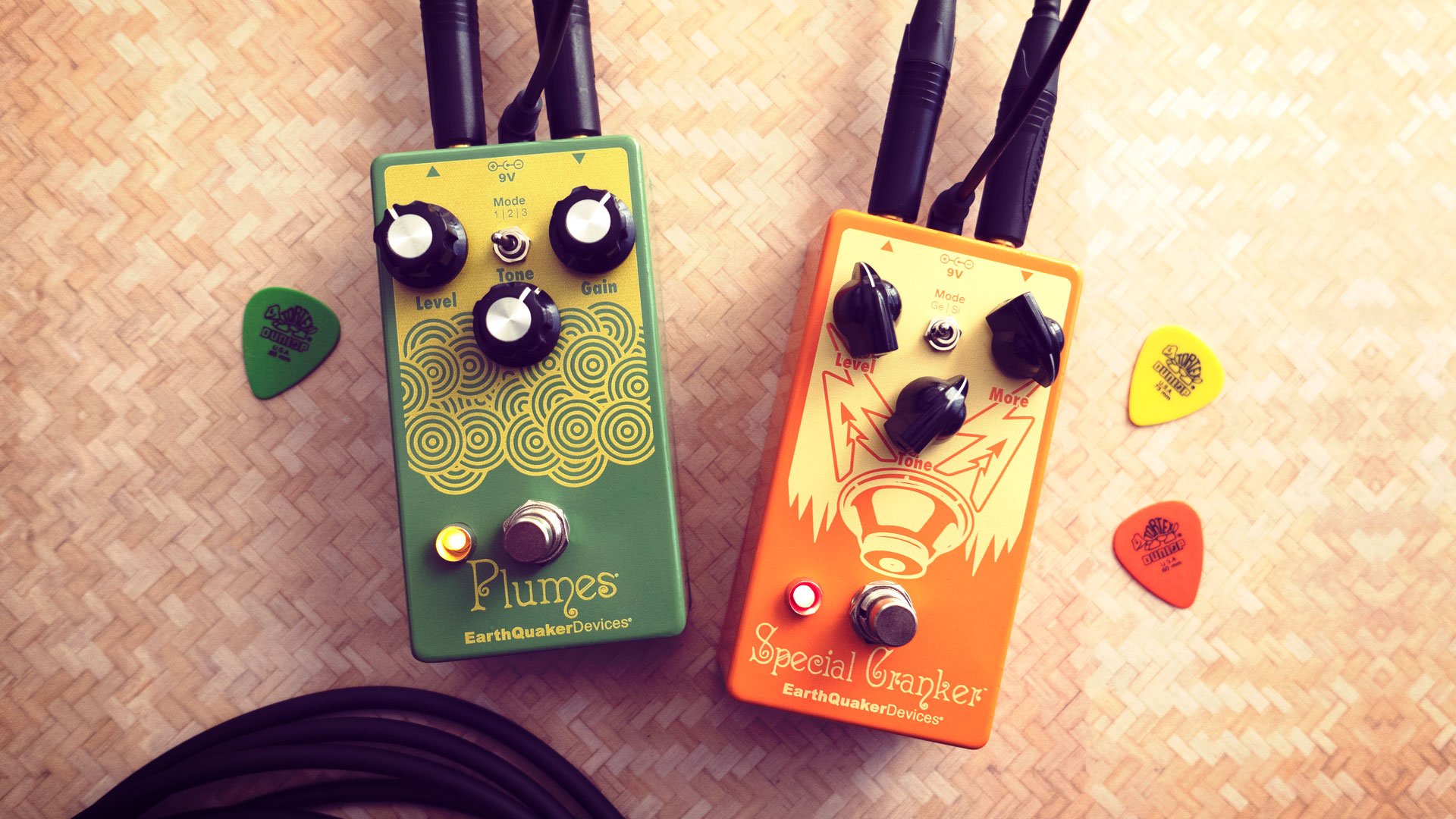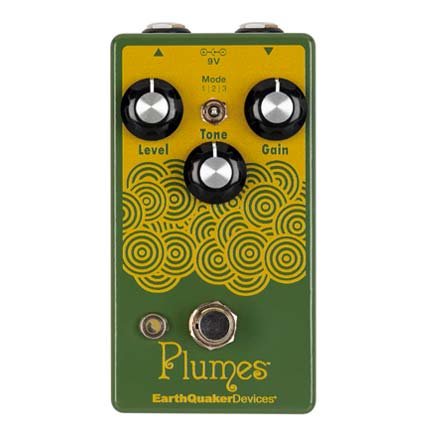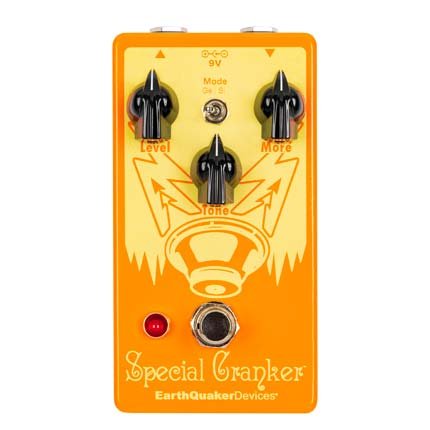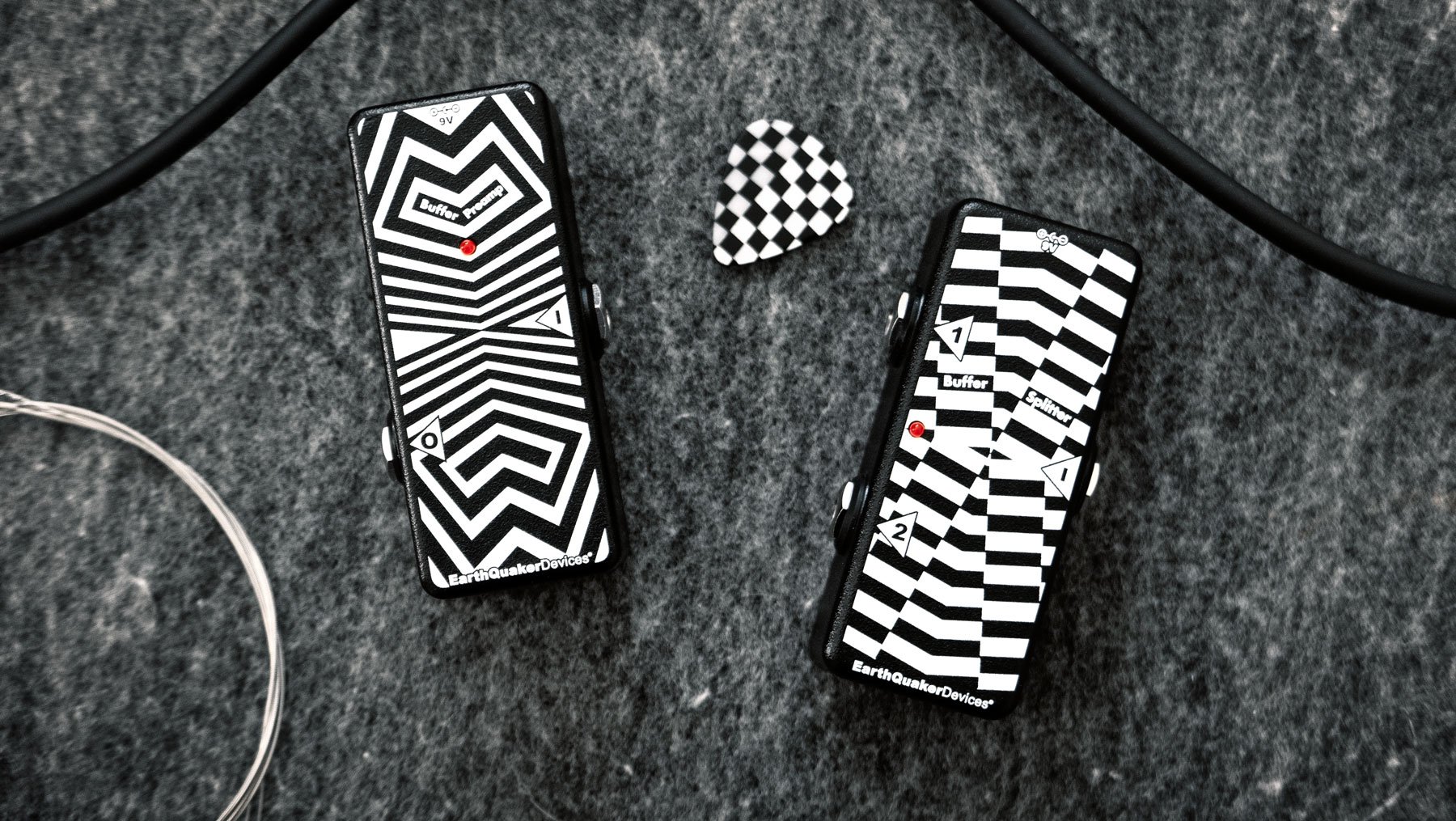Overdriven To Distraction
Lane Sparber
For most guitarists, choosing an overdrive or distortion pedal is one of the most important decisions to be made, because a lot of us (myself included) consider our distorted tones to be our signature sound. My goal here is to help ease your burdens just a little bit by way of helping you make an informed decision when choosing between the Plumes and the Special Cranker.
On the surface, the Plumes and Special Cranker may seem similar. They’re both in the overdrive family. They both share the same sized enclosure, they both have three knobs and a switch, and they even share the same price point of $99. Finally, they both have EQD’s innovative “flexi-switch,” where the true bypass function is controlled by a special circuit that latches the pedal “on” or “off” normally with a tap, or they can be turned on momentarily for as long as you keep your foot down on the switch. In all honesty, that’s just about where the similarities end, because these are two VERY different beasts, and the design philosophy behind each is decidedly unique.
The Plumes is most commonly housed in a green enclosure. This is not an accident, for it’s EarthQuaker’s highly refined and expanded take on the venerated Tube Screamer sound. The goal is not so much about transparency as it is about achieving a very specific sonic signature. In fact, the phrase “Tube Screamer” has almost become an adjective in and of itself when describing guitar tone. Why has this happened? Because that circuit is designed from the ground up to imprint a certain coloration (or sonic identity) when engaged. That’s what we WANT, and it’s what a lot of us specifically look for when choosing an OD pedal these days - that distinct and transformative midrange hump that gets amps soaring.
On the other side of the coin, we have the Special Cranker, and its aim can be seen as the exact opposite of the Plumes. The Special Cranker is designed to take your existing sound and simply give you more of it. It does not aim to impart its own tone or sonic imprint, and in its own way what it achieves is even more impressive. This pedal will NOT alter your tone as much as expand it. The manual that comes with the pedal describes it as akin to adding a preamp tube stage before your amp. Whereas the Plumes has the potential to add stratospheric amounts of sheer gain and a certain amount of sonic mayhem to your signal, the Special Cranker is more about saturation. In fact, the “More” knob it boasts isn’t even controlling gain like its sibling - it’s actually re-biasing a transistor. This can be thought of as adding or subtracting saturation instead, and the effect (pun intended) is very different … and quite addictive.
To test these pedals side by side, I used a Tweed Fender Vibrolux (5F11) clone that I built, because it’s one of the most honest and transparent amps I’ve heard. It also has just enough clean headroom to test these overdrives at a decent volume. The guitars used were a 2013 Fender Telecaster with Mojotone “Broadcaster” quiet coil pickups and a 1998 Les Paul Studio with a Seymour Duncan 1959 in the neck and an Alternative 8 (think a “JB” on steroids) in the bridge. To simplify things, I focused solely on each of the guitars’ two pickups individually. Here are my impressions.
With the Telecaster’s neck pickup, the Plumes added depth and clarity in all three modes. The chords got fatter, and single notes had a lot of bloom to them. The gain knob adds girth until 3 o’clock or so. Then things get intense rather quickly. That’s where the actual distortion kicked in. The Special Cranker, instead of boosting and adding, took the inherent tone of this pickup and simply made it more intense. What I mean is that when I turned up the “More” knob, the sound did not inherently change; it gave me more of what my Tele was already doing. The sound was still 100% a Telecaster neck pickup. Just … well … cranked up. Funny that.
The Tele’s bridge pickup through the Plumes gained a lot of high end bite. In fact, the bridge pickups in most Telecasters distort fairly easily due to the fact that they output massive amounts of treble. My Tele is no different, and at lower gain levels, the Plumes imparted quite a bit of snarl to the signal, and when the gain knob was turned past the saturation point, it entered crunch territory (with just a hint of fuzz). A marked change indeed. With the Special Cranker, at lower settings on the “More” knob there was indeed a subtle boost, and as I turned it up the pedal did break up, however this breakup was NOT as transformative - it was completely within the parameters of the sound I already had. This is super useful for simply adding some intensity - especially for solos.
Moving on to the Les Paul, once again engaging the Plumes changed things significantly. The Les Paul’s neck pickup, being a humbucker, started to break up at much lower settings on the gain knob. When this knob was turned up, things entered fuzz country. By way of comparison, the Special Cranker took the same sound and at lower settings enhanced the mids a bit and added a very slight amount of breakup. Increasing the “More” knob gave the sound a more full spectrum overdrive - like the tone I already had hit the gym and lifted weights. I was blown away by the way this pedal fattened things up in a completely unobtrusive way.
When it came to the Les Paul’s bridge pickup, the Plumes proved itself to be a rock and roll machine. Even at lower gain settings, I was in breakup territory (think early Aerosmith). As the gain was turned up, the effect gradually became pure distortion through and through. Even with the tone knob dialed back, there was no question that I’d turned on an OD pedal! Conversely with this pickup what the Special Cranker did was equally impressive. With the “More” knob turned down, I DID get some breakup and bite, but the guitar and amp’s sonic signature remained completely intact. As the “More” knob was turned up, the saturation increased - but without adding any crunch or fuzz. Things just got…thicker. There’s no other way I can think to describe it. Once again, this pedal took a sound I already loved and gave me MORE of it.
If I had to sum up this comparison in a nutshell, I’d say that Plumes expands your signal vertically - it can boost and change your sound to a significant degree. The Special Cranker takes what you already have and expands it horizontally - it widens and thickens what you already have and adds just a bit of attitude. In a live setting, I personally would be tempted to set up the Special Cranker and leave it on all the time - it’s that good. The Plumes would be for when I wanted send my sound into orbit. The crux here is that both pedals do amazing things, and while they are both technically overdrive pedals, they share little to no DNA beyond that. The Plumes and the Special Cranker are drastically different sonic paintbrushes, and the more you know going into your decision making process, the happier you’ll be. Happy hunting!!!!
Lane Sparber is an amp / guitar / bass / pedal tech who lives and works in Fresh Meadows, Queens, New York. He started repairing gear in his mid-teens, and he’s 46 now, so you do the math. When not causing mayhem in his workshop, he can be found desperately trying to hide his latest orchid purchases from the rest of his family. You can find him on Instagram at @amptech74 or on Facebook at www.facebook.com/lane.sparber. Come say “Hello!”







